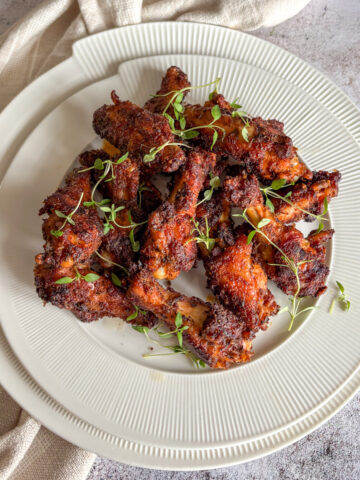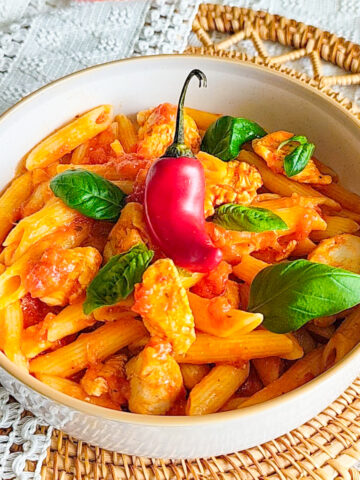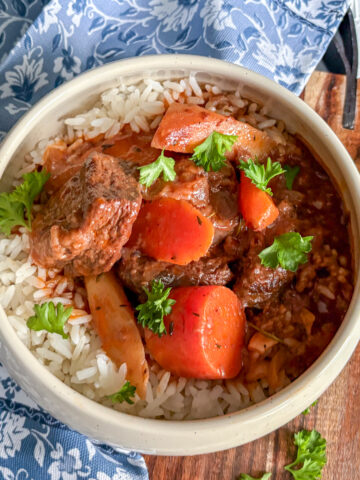Shurpa is the ultimate comfort soup, packed with rich flavours, tender lamb, and vibrant vegetables. This traditional Uzbek dish has many variations, but today, we're making nohat shurpa, a version with chickpeas. The combination of slow-cooked lamb, fragrant spices, and creamy chickpeas creates a deeply satisfying dish that's both nourishing and visually stunning.
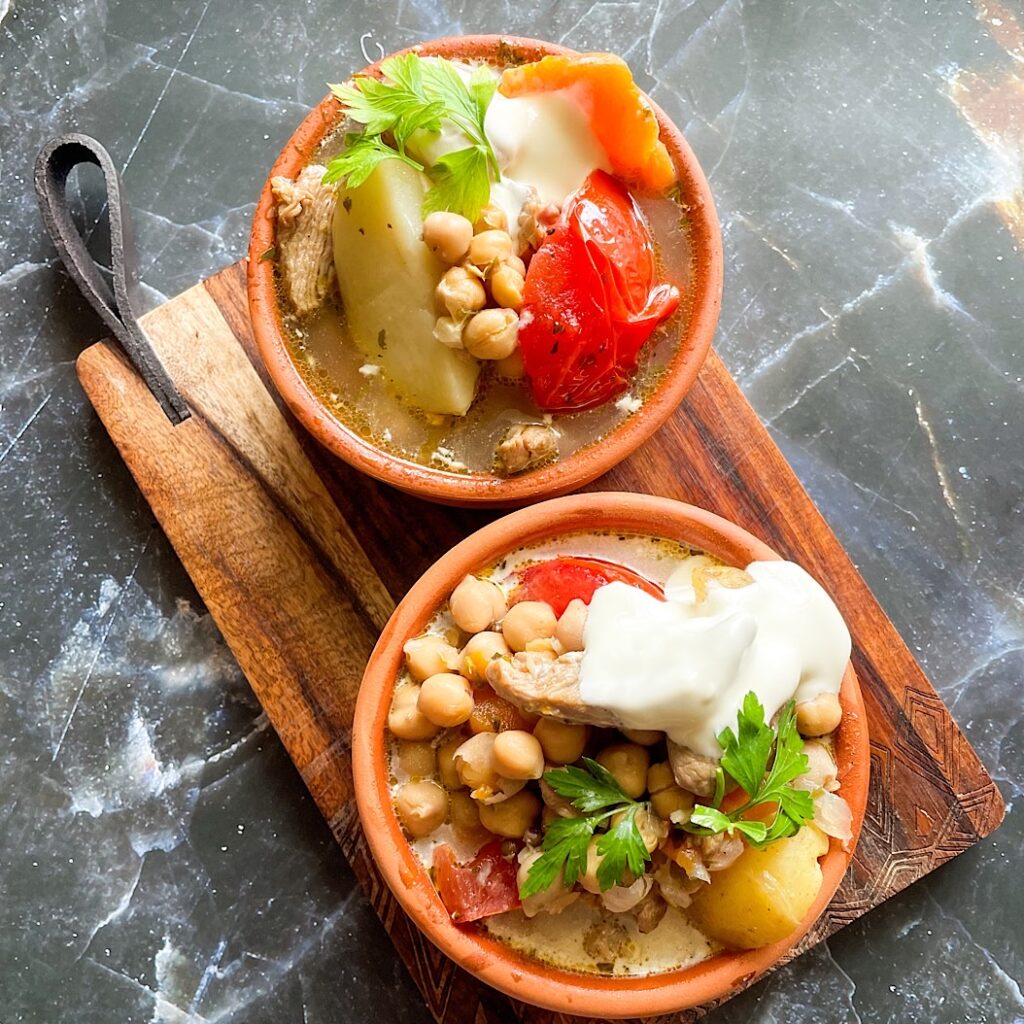
Jump to:
The History of Shurpa
Shurpa is one of the most beloved dishes in Uzbekistan and across Central Asia. This thick, flavourful soup has been a staple for centuries, often cooked in large quantities and served to family and guests. Traditionally, it’s prepared in a kazan, a heavy cast-iron cauldron, over an open flame, allowing the flavours to meld beautifully. While lamb is the most common protein, variations include beef, chicken, or even fish. The slow simmering process is key, ensuring a rich and aromatic broth that sets shurpa apart from other soups. And if you like traditional food, like I do, then do not skip that amazing chakhokhbili recipe
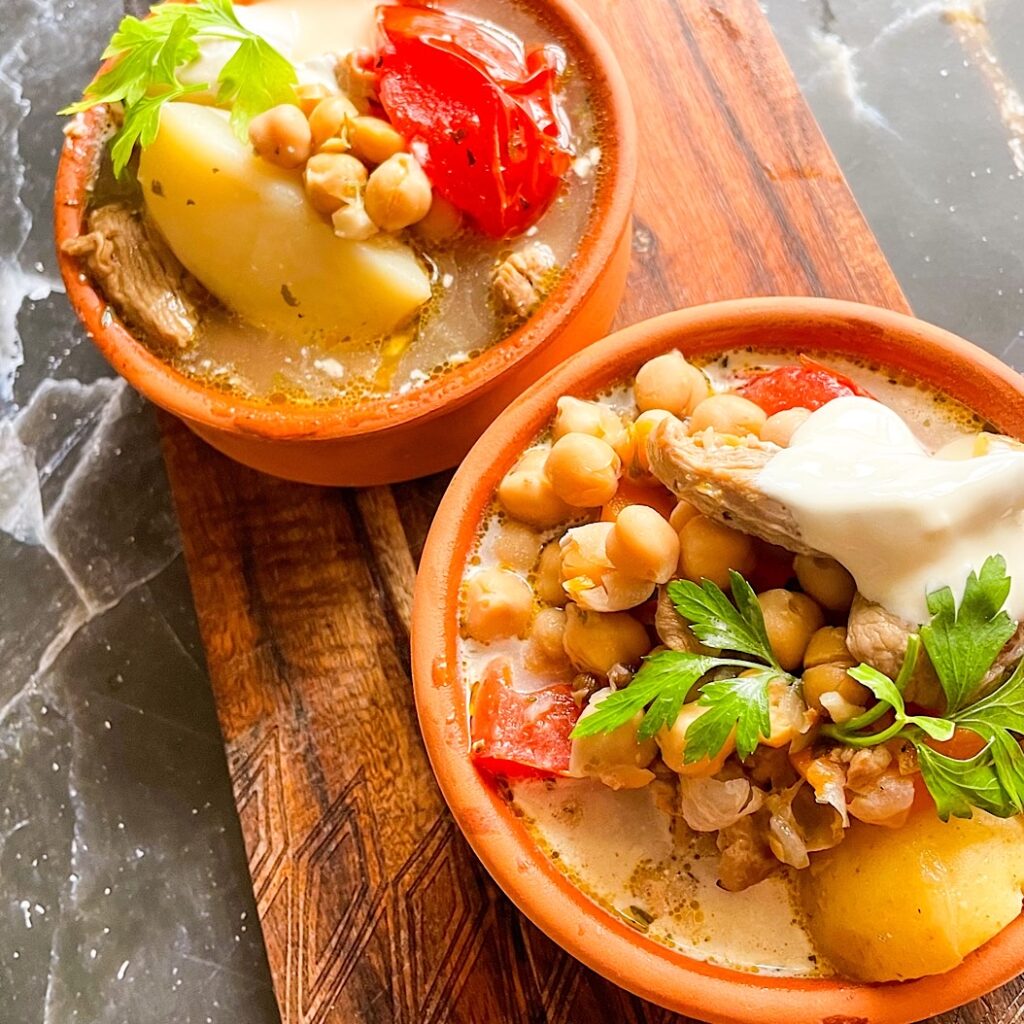
Why You Need to Make This Soup
If you love rich, hearty, and deeply flavourful soups, nohat shurpa is a must-try. The combination of slow-cooked lamb, tender chickpeas, and warming spices makes it an incredibly satisfying dish. It’s perfect for any season—ideal for an outdoor cookout in summer or a soul-warming meal in winter. The best part? It requires minimal effort but delivers maximum flavour with simple, wholesome ingredients.
Ingredients: What Makes This Soup Special
The beauty of making Shurpa with chickpeas is that it uses humble, everyday ingredients to create something truly rich and nourishing. Everything here is easy to find, budget-friendly, and made to shine through slow cooking, allowing each flavour to develop naturally and fully.
- Lamb – I am using boneless lamb for convenience and quicker cooking; it still brings deep, savoury richness that forms the heart of this soup.
- Potatoes – These add comforting texture and soak up the flavourful broth, making the soup more substantial and satisfying.
- Carrots – Sweet and earthy, they bring balance to the richness of the lamb and add a beautiful golden colour to the bowl.
- Chickpeas – Canned chickpeas are a practical shortcut; they add a creamy, nutty texture and make the soup heartier without extra prep.
- Tomatoes – Fresh tomatoes bring gentle acidity and body to the broth, helping to round out the flavours and enhance the soup’s amber hue.
- Onions – Cooked down slowly, onions create a mellow, slightly sweet base that anchors the dish and adds depth.
- Garlic – A whole garlic head infuses the broth subtly, offering background warmth and aroma without overpowering the other ingredients.
- Fresh herbs – Parsley, dill, or violet basil add a fresh, vibrant finish that contrasts the richness and lifts the dish right before serving.
- Oil – A neutral-flavoured oil is used for browning the lamb and vegetables, unlocking flavour without interfering with the spices.
- Spices – A simple but essential mix of cumin, coriander, ground red pepper, and sumac gives the soup warmth, depth, and a gentle touch of spice and tang typical of Uzbek cuisine.
In Uzbekistan, traditional shurpa is cooked using kurdyuk, which is rendered lamb fat. This enhances the richness of the broth and adds authentic flavour. If you can find it at a Middle Eastern grocery store, it's worth trying.
It’s also important to cook shurpa in a heavy cast-iron pot like a Dutch oven, a kazan, or even a slow cooker. The goal is slow, gentle cooking to allow the flavours to develop fully. And here is my stand - avoid stock cubes, as the true essence of shurpa comes from the slow-simmered lamb broth. Adding chicken or beef stock would overpower the delicate balance of flavours. Plain cold water is the only liquid you need for an authentic and well-balanced broth.
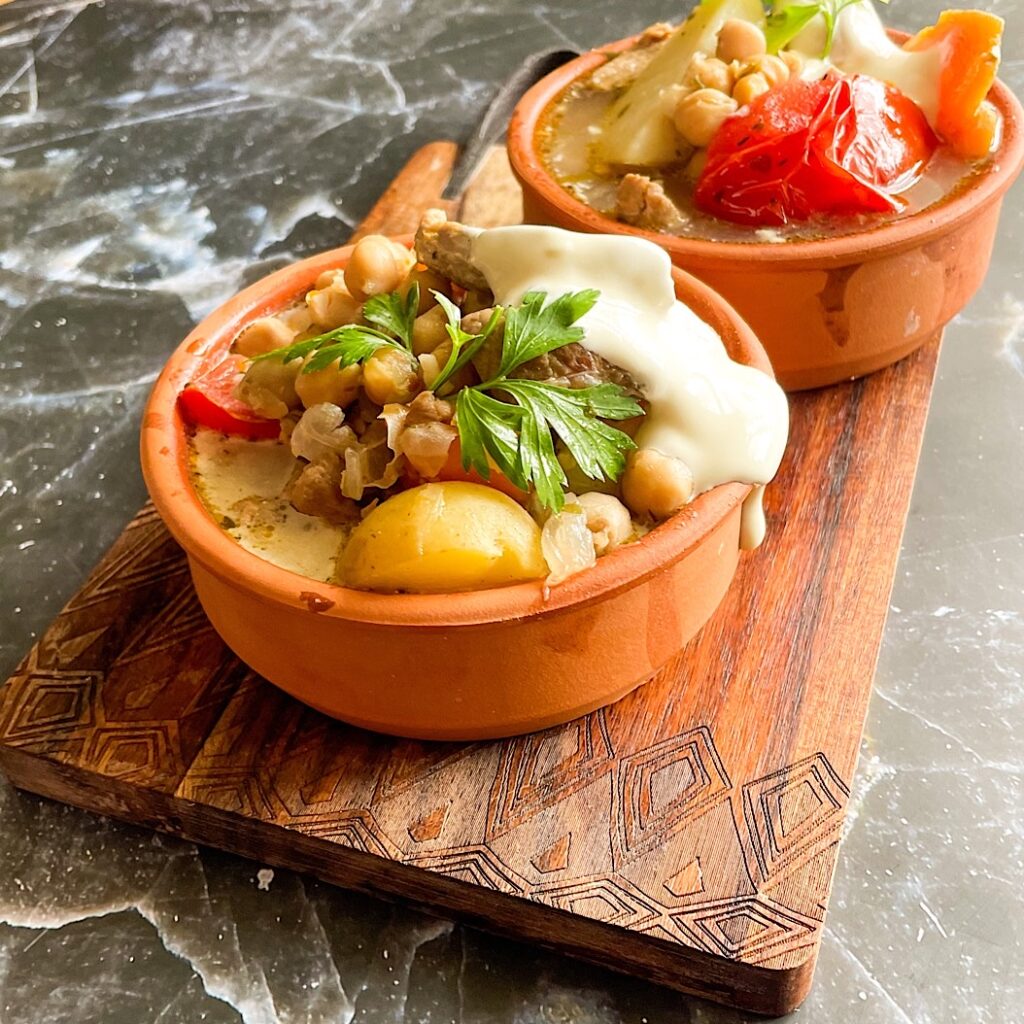
How to Cook Shurpa
Cooking shurpa is a simple yet deeply rewarding process.
This recipe for Shurpa with chickpeas is surprisingly easy to cook. It’s all about slow simmering and giving the ingredients time to release their natural flavours. With just a few simple steps, you’ll have a deeply aromatic, nourishing soup that tastes like it cooked all day.
Step 1 – Start by browning the lamb in a heavy-bottomed pot with a bit of neutral oil. Let it develop colour and richness, then add thickly sliced onions, your spices, and a generous pinch of salt. This is where your flavour base begins.
Step 2 – Add the chopped carrots and cook for another 10 minutes. Then pour in cold water to fully cover the meat and vegetables. Place the whole garlic head in the centre, bring to a low simmer, and cook uncovered on the gentlest heat for about 1.5 hours. Do not let it boil.
Step 3 – Add potatoes, chopped tomatoes, and rinsed canned chickpeas. Continue to simmer for 15–20 minutes until the potatoes are tender and the chickpeas fully warmed through.
Step 4 – Turn off the heat, cover the pot with a lid, and let the Shurpa rest for 15 minutes. This final pause allows all the flavours to settle and blend beautifully.
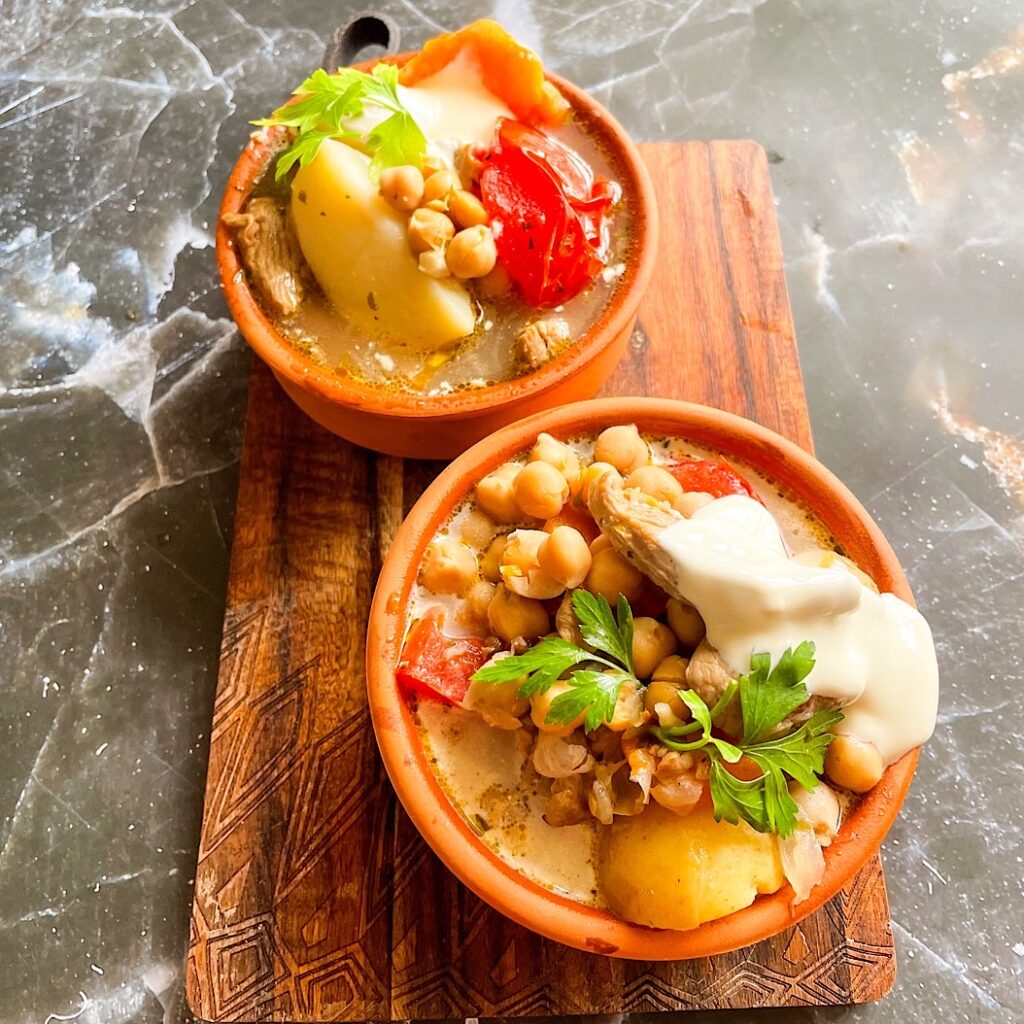
How to Serve Nohat Shurpa
Shurpa is best enjoyed in deep bowls, ensuring each serving includes a generous portion of meat, vegetables, and chickpeas. To enhance the flavours, add a dollop of sour cream for creaminess, fresh herbs like parsley, dill, or violet basil for brightness, and a slice of warm, crusty bread to soak up the rich broth. If you like an extra kick, sprinkle in some chopped chilli or ground red pepper.
10 Useful Cooking Tips
- Use a heavy cast-iron pot, Dutch oven, or traditional kazan to retain heat evenly.
- Choose well-marbled lamb for the best flavour.
- If using dried chickpeas, soak them overnight and cook separately before adding.
- Sumac is optional, but it adds brightness and acidity—don’t skip it if you can find it.
- Don’t rush the simmering process; time is your main ingredient here.
- Let the soup rest after cooking to help the flavours deepen and mellow.
- You can skim excess fat from the surface if you prefer a lighter broth.
- Avoid using stock cubes or broth—they mask the flavour of slow-cooked lamb.
- Add fresh herbs just before serving to preserve their aroma and colour.
- Serve with crusty bread or Uzbek-style flatbread for an authentic finish.
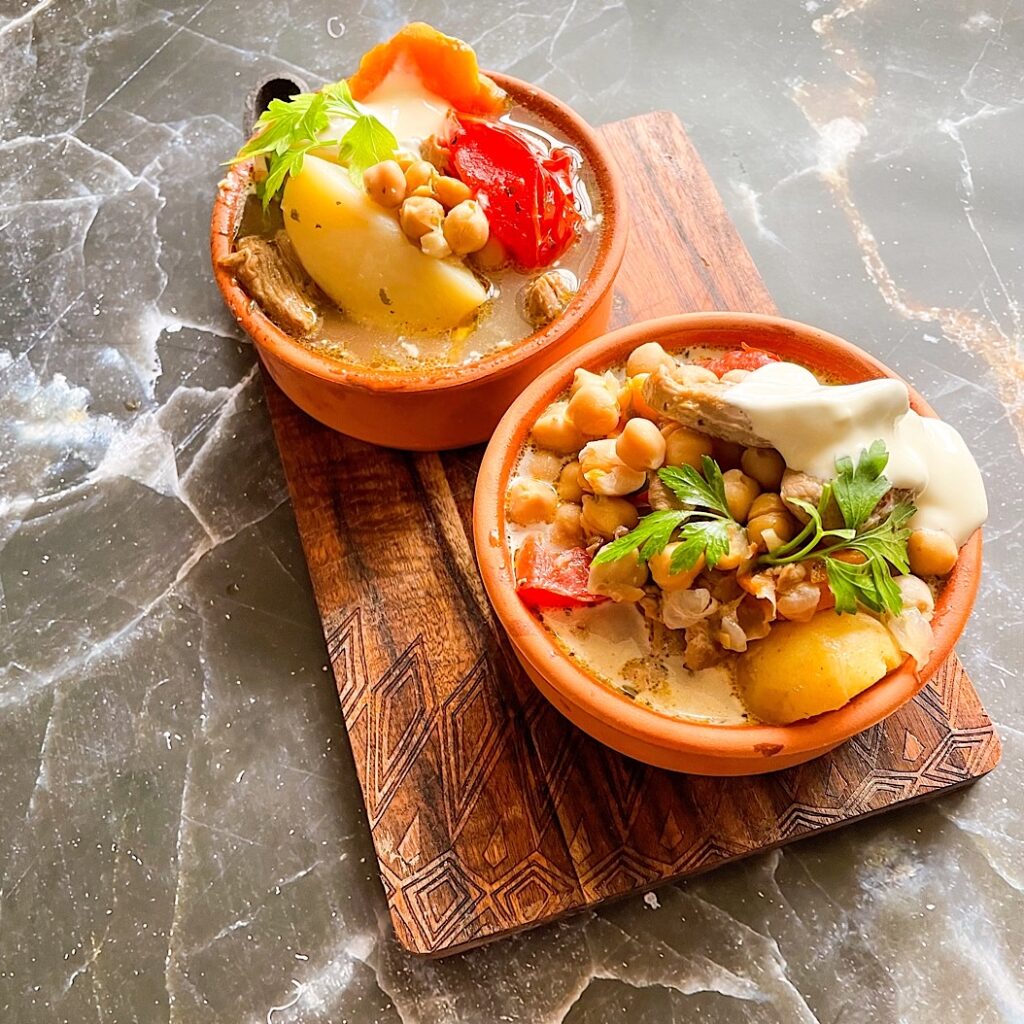
Nohat Shurpa – Uzbek Lamb and Chickpea Soup Recipe
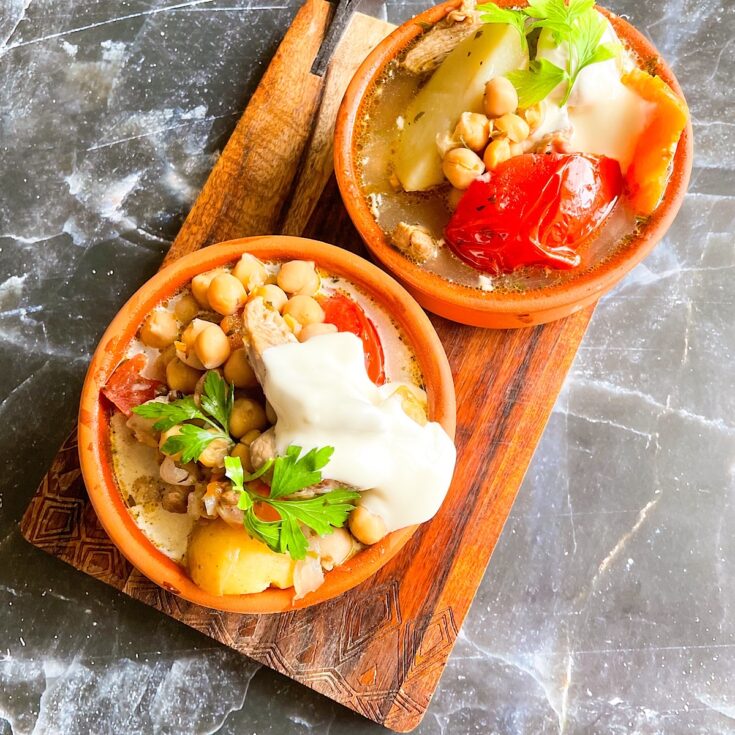
Shurpa (Nohat Shurpa) is a rich and hearty Uzbek soup made with slow-cooked lamb, chickpeas, and vegetables in an aromatic broth. This traditional dish is packed with deep flavours, thanks to its slow-simmering process and a perfect blend of warm spices. Whether you're looking for a comforting winter meal or a nourishing dish to enjoy year-round, this authentic recipe is a must-try.
Ingredients
- 600g lamb on the bone
- 3 medium potatoes, peeled and cut into large chunks
- 2 carrots, sliced into thick pieces
- 1 can (400g) chickpeas, rinsed and drained
- 3 tomatoes, quartered
- 2 large onions, sliced into thick half-rings
- 1 whole garlic head, unpeeled
- 2 tablespoons neutral-flavoured oil (sunflower or vegetable oil) OR lamb fat - kurdyuk
- 1.5 litres cold water
- 1 teaspoon salt (or to taste)
- ½ teaspoon black pepper
- 1 teaspoon cumin (zira)
- 1 teaspoon ground coriander
- ½ teaspoon ground red pepper
- ½ teaspoon sumac
- Fresh herbs (parsley, dill, or violet basil) for serving
- Optional: Sour cream and extra chilli for garnish
Instructions
- Brown the meat – Heat oil in a heavy cast-iron pot, Dutch oven, or kazan over medium-high heat. Add the lamb pieces and sear for 5–7 minutes until they develop a golden crust.
- Add onions and stir for 3–4 minutes until they soften slightly. Sprinkle in salt, black pepper, cumin, coriander, ground red pepper, and sumac. Cook for another 2 minutes to release the aromas.
- Add carrots and stir. Pour in cold water, ensuring the meat is fully covered. Place the whole garlic head in the centre. Lower the heat to a gentle simmer and cook uncovered for 1.5 hours, making sure the soup never reaches a full boil.
- Toss in the potatoes, tomatoes, and rinsed chickpeas. Let the soup cook for another 15–20 minutes until the potatoes are fork-tender. Adjust seasoning if needed.
- Turn off the heat, cover with a lid, and let the soup rest for 15 minutes. This step helps the flavours fully develop.
- Ladle the soup into deep bowls, ensuring each portion has a generous mix of lamb, chickpeas, and vegetables. Garnish with fresh herbs and serve with warm bread. Optionally, add sour cream or extra chilli for a richer taste.
Notes
This authentic Uzbek nohat shurpa is best enjoyed fresh, but it also tastes even better the next day as the flavours continue to deepen. Enjoy this soul-warming dish as a complete, nourishing meal!


